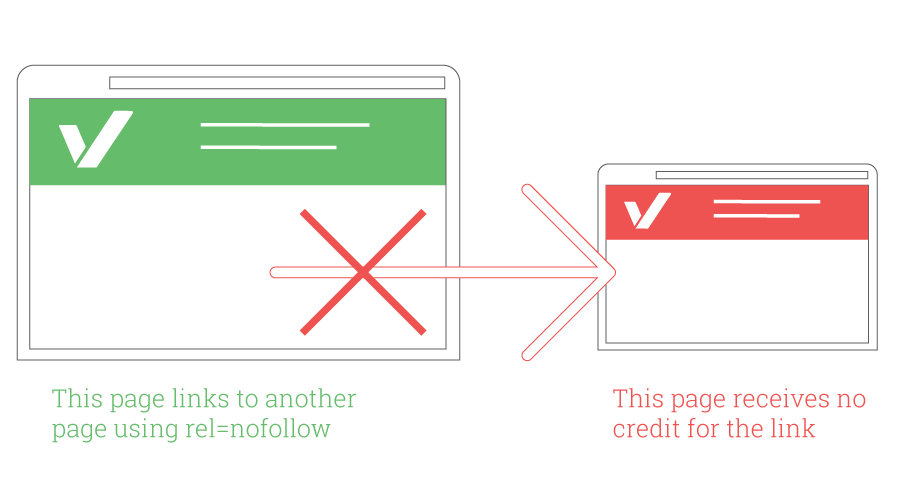With a rel="nofollow" you indicate that search engine spiders should not follow the link and that links do not carry any authority from the page on which the link appears. However, people who comment on websites are trying to trick Google's algorithm, they can do this by including their own links in the comments on websites that appear at the top of Google and adding this tag to them. But also by promoting certain urls on Facebook in comments and posts. This way, that link receives more traffic and e.g. spam websites end up unjustifiably high in search results. To prevent deception, Google recently added a new measure. Does this make the nofollow tag, a minus for SEOs?
Google released Rel=nofollow to tell search engines not to follow the source of the link. An example of how this is still sometimes abused in practice:
Suppose,
I have a website on a specific topic. This page gets tremendous views and a high ranking in Google for a specific search term. Someone notices this success and sends an email. The person has a fake news website and asks if I would link to his page on my website in exchange for €500.
Easy money right?
This doesn't really seem like a big deal. I accept the deal. I receive the money, put a link to their website on it and add a rel=nofollow tag. Google can't track the source this way and I don't give them backlink power.
A link with a nofollow tag looks like this in the source code:
<a href=”http://www.website.nl” rel=”nofollow”>anchortext</a>
Visitors do not see the nofollow tag. This tag can only be seen in the source code. A nofollow tag is generally used for the following reasons:
- This is a sponsored link;
- This is a paid link;
- The website administrator does not want to be responsible for what is on the linked website;
- If visitors can post content as comments or on a forum.
Anyway, back to the example:
So for me it's not a big deal, but when this website is on multiple high domain sites with a rel=nofollow tag it does become a big deal for Google. As a result, Google cannot figure out why a fake news article is suddenly trending worldwide and accepted as the truth by thousands of Google users. This also applies to "comment spam," in which spammers link to their (spam) websites under blogs.

With rel=nofollow, the risk of misinformation and link schemes is high. Google simply cannot keep track of certain "shady" parts of the Web. This is what Google wanted to put an end to.
What is Rel=nofollow?
Google released Rel=nofollow to tell the search engines not to follow the source of the link. This way, spam websites can't receive backlinks, making it difficult to rank high in search results. Rel=nofollow has always been a guideline, but since September 2019, Google announced that from then on it is officially "strong hints. A "guideline" means that search engines see rel=nofollow and listen to it. That's it. A "strong hint," means Google may respect your opinion, but ultimately Google decides if it's okay.
This is exactly what Google said during the announcement:
"Nearly 15 years ago, the nofollow attribute was introduced as a means to help fight comment spam. It also quickly became one of Google's recommended methods for flagging advertising-related or sponsored links."
You can now specify what the link is:
*Links marked with these rel attributes are generally not tracked. Keep in mind that linked pages can be found in other ways, such as through sitemaps or links from other sites, so they can still be crawled.
3 reasons SEO strategists have a problem with the change:
1. The fact that rel=nofollow has gone from a guideline to a strong hint bothers SEO strategists the most. They doubt because of this, whether it is still useful to use this Rel-nofollow on their website if Google can still decide not to follow and accept it. After all, does their work still make sense if they set canonicals and Google "doesn't respect" the canonical?
2. SEO strategists now find it more difficult to use the Rel=nofollow on their website, since you now have to be more specific about what type of rel=follow you want to use.
3. Some "shady" links will still be able to receive backlinks because Google can also choose to ignore the nofollow tag. This may still tempt people to buy links.
Beyond the frustrations of SEO strategists, Google's new rel=nofollow rules do benefit users. This is because Google now does have insight into potential "spam links. Misinformation is now less likely to show up in Google's search results.
Want tips on how to rank higher within search results? Then read our blog with 4 SEO optimization tips.
Do you have questions about this change from Google?